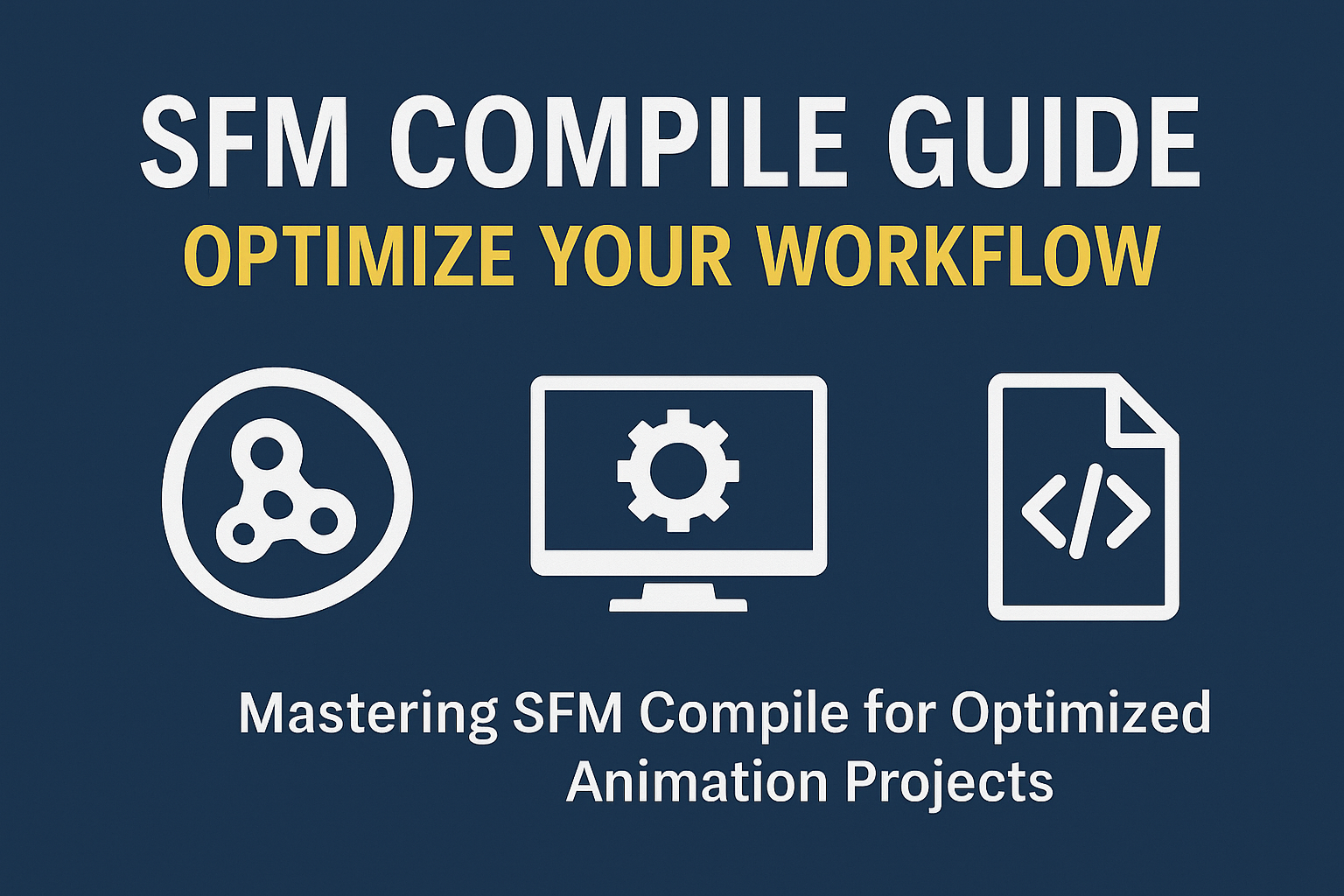Introduction
SFM Compile is the most crucial part of Source Filmmaker (SFM) that converts models, animations, and textures into a format that SFM can render. If not generated assets properly, your models will not show correctly and will show errors in production. This will guide you through each step to prepare and optimize your assets for animation.
Setting Up Your Environment for SFM Compile
Before we start shooting to compile your assets you will already should have SFM Compile and all the required utilities. You will need the most current Source Filmmaker, the Source SDK, and model compiling tools. After installation, set your environment variables to be able to let the SFM find all necessary resources easily. This setup of tools themselves and environment variables could potentially save you time and preventing errors in compiling. Also, you will have to know the directory structure of where is the folder where your files are found for your TeX stuff to compile easily. You will want to have your assets properly organized in three respective folders for models, materials and textures so all files are were they should be.
The Basics of SFM Compile
In a nutshell, SFM compile is converting source files to useable files for animation. Then, during compile models, textures, and animation are converted into formats such as. mdl,. vtf, and. smd which can be rendered by the Source engine. Accurately interpret what are the “model path”, “compile log”, “texture paths” that can help you solve problems and mistakes. Log output will help you pinpoint and correct issues that may crop up during compilation.
Preparing Your Files for Compilation
Make sure you have your assets grouped correctly before you compile. Models need to be in. smd or. qc format, textures in. vtf format. Keep your assets in tidy folders (models,materials, etc.) for easier organization. This is essential, since the lack of indention or the wrong location of files can cause compiling mistakes. Make sure you keep on top of those file formats and file locations above to avoid those common problems.
Step-by-Step Guide to Compiling in SFM
Now that you have your files ready, it’s time to compile. First set the appropriate compile arguments, eg output directory or any options you need to compile with. Open the console for SFM and then use studiomdl to compile your models. Make sure you reference the. qc files properly, as this is going to determine how the assets are handled. After building, look through the log file to look for any errors. And if there is anything wrong4 in there like textures missing or even models that do not match. Fix these problems and recompile if necessary.
Advanced SFM Compile Techniques
Larger or more complicated projects may want to streamline their compile step. Perhaps this is where some simplifications of the model or texture could help the “export model” be produced more quickly. SFM also has additional compile commands which can tweak options for particular results. These higher-level features can aid huge campaigns or certain types of assets and make the whole process much more streamlined.
Common Compilation Problems and Solutions
There are frequent compilation errors (missing textures, wrong model path etc..) These may often originate from wrong paths or file formats not supported. Analyse your log file to get an exact description of the error the root cause will be identified. Another possibility is if certain files are bad, they could be replaced or re-downloaded. Always have your files unbroken and linked in the project.
Best Practices for Efficient SFM Compilation
To allow it to compile easily, keep your project tidy, and do not overcomplicate your assets. Also, always keep your code clean for models and animations, that avoids errors and helps you compile faster. Maintaining good filing structures and naming conventions will speed up your workflow.
Troubleshooting Tips for Beginners
As a newcomer to SFM Compile, you wouldn’t expect to be faced with errors during the compile stage. Begin with a refresher on some common issues: improper paths, missing files, etc. Many times, even when all else fails, just restarting the program or checking the path to the files can solve minor problems. If you are still running into issues, there is plenty of help within the SFM community on sites such as Steam or Reddit where you can get help from the veterans.
Conclusion
Learning how to use the SFM’s compiler is a fundamental part of making quality animation projects. With this guide, you will have no problem sailing through the compile process, catching and/or fixing mistakes and tuning your workflow for better results, sooner! You’ll be able to compile assets fast and reliably with some practice and the right techniques to make your animations ready for the next stage of production!
FAQs
Which files do I need to be able to compile models in SFM?
Models need to be in. smd or. qc format, and its textures in. vtf format.
Why are there so many missing textures?
Common texture errors are missing files that are not correctly linked to the application (for example because of file broken paths) or Incompatible file format. Recheck your textures and make sure they are in the. vtf format.
How long does it take to compile the SFM?
Compilation time is longer the more assets you have and the more complex the assets are. Larger projects will take you longer, so be ready to wait a couple of minutes.
Is there a way to make the compile of the SFM faster?
Yes, simplifying the models and reducing texture sizes can be necessary to speed the compiling process. You may also divide larger projects to smaller parts and compile a long less file to shorten your cremation time.
How do I deal with compilation errors?
Please see the log file for description of the error. Frequently, existential problems like errant file paths or formats can be addressed to fix the errors. You can also try looking in online forums for troubleshooting advice.


